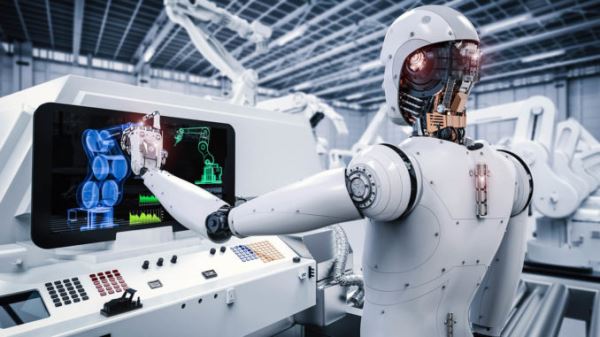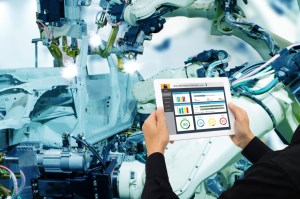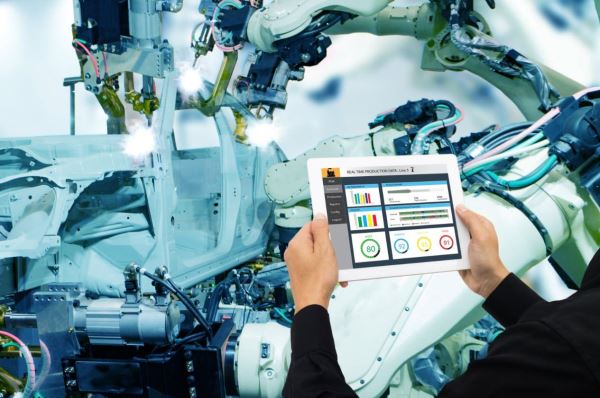Industries around the world are being disrupted by improved technology and connectivity, and manufacturing is no different.
Smart factories are one of the biggest talking points with huge benefits available for those willing to make the initial investment.
John Broadbent of Realise Potential, is an expert with more than 40 years' experience in the manufacturing industry.
In this recent interview Mr Broadbent, who is also an Adjunct Professor of Engineering at UTS, discusses the future of factories and the steps companies should take to make their systems smarter...
How do businesses benefit from a smart factory?
Just as there are different ways that a company can modernise its factory, there are also different benefits that come about because of upgraded and integrated technology. One of the big improvements is a clear picture of data, generating a greater sense of control over what's happening on the production line.
The biggest benefit is visibility for owners and managers, Mr Broadbent says.
"They can see what's going on in their production process, anywhere, anytime. This helps with recall prevention and eliminates incorrect product being distributed.
“It means you can notify your customers about any breakdowns that are going to affect production; it improves the efficiency of production so you save money and you can get more capacity out of your existing equipment. The big one I'm seeing at the moment is reduced waste to landfill."
Sometimes the benefits can come as side effects of having a smart system.
As a consultant to food giant Sanitarium, Mr Broadbent witnessed the benefits that flowed with the implementation of a real-time system that ensured accurate labelling for their pallets.
"Inadvertently, their 14,000 pallet distribution centre went up to 100% IRA (inventory record accuracy), he said. “That means of all those 14,000 pallets, they knew what was on it and where it was."
"They also picked up $450,000 per year in unforeseen benefits. By integrating their top floor to their shop floor and horizontally integrating their equipment, additional revenue was generated over and above what the initial forecasted savings of the capital expenditure program."
How do customers benefit from a smart factory?
While there are countless benefits for a business to upgrade its facilities, many of these lead on to a better product for the consumer. As consumers become more conscious, they want to know more about what's gone into the manufacturing process and where it’s all happened.
With real-time tracking and a more accurate system to track a product through the manufacturing process, what results is a better informed consumer.
"If you have visibility through your supply chain, you have much better traceability,” Mr Broadbent said. “Particularly in the food industry, consumers are wanting more transparency of the supply chain. They want to know that when they buy a piece of organic steak, that it is actually organic and where it came from."
What are the first steps to creating a smart factory?
Although you may think that you should start investing in smart equipment, the first steps should always be to lay a sound foundation.
Before you can create an internet of things in your factory, you need to have a reliable network with firewalls and strong cybersecurity in place.
This can be costly, and there's no direct return on investment in doing so, but it will make things work a lot better in the long run.
The other consideration is to make sure purchased equipment is ‘open’, that data from it can be extracted easily and stored in a central data repository. It’s also important that the source code on the machines, often in PLCs, is able to be modified so it can be put on the factory LAN.
"I see organisations struggling with equipment they bought overseas that's not ‘open architecture,” Mr Broadbent said. “So when they want to become a smart factory they can't connect to that piece of equipment. They must buy equipment where they can access the source code, because if they can't extract the information they need, they’re unable to then feed into machine learning or any artificial intelligence platforms."
Despite the initial early investment, there's much to be gained from creating a factory that will last into the future.

While some companies have already got things in place, others need to catch up or they'll soon be left behind.
History has shown the companies that rest on their laurels can quickly be overtaken by their competitors and there's a good chance that those involved in packaging and processing, may find themselves in the same boat if they don't make changes that utilise the developments in technology.
John Broadbent will give a presentation on the Factory of the Future: It’s Already Here at the upcoming AUSPACK Business and Industry Conference at the Melbourne Convention and Exhibition Centre on March 27.


